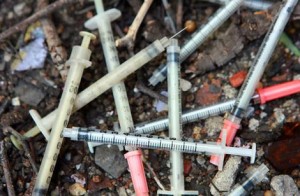 Using the WONDER database, the Centers for Disease Control and Prevention (CDC) constantly track the number of deaths in the US each year. The National Center for Health Statistics also maintains the causes of each death in the database. Whenever an individual passes away, there is a certificate generated that notates the exact cause of death. The local agencies and the CDC use this information to track growing trends in fatalities and analyze ways of decreasing those numbers whenever possible through research or public awareness and prevention programs.
Using the WONDER database, the Centers for Disease Control and Prevention (CDC) constantly track the number of deaths in the US each year. The National Center for Health Statistics also maintains the causes of each death in the database. Whenever an individual passes away, there is a certificate generated that notates the exact cause of death. The local agencies and the CDC use this information to track growing trends in fatalities and analyze ways of decreasing those numbers whenever possible through research or public awareness and prevention programs.
The current prescription drug abuse epidemic has been monitored using this system. In 2010, 80,000 deaths due to overdose from drug or alcohol abuse were reported in the US. This statistic has increased more than twofold since 1999, and over half of the escalation in overdoses has been solely as a result of prescription drug abuse. Roughly, a whopping 75 percent of the pharmaceutical deaths are caused by opioid painkillers. These include:
Opioid prescription painkillers are derived from the opium poppy and have effects similar to heroin. They are addictive just like heroin as well, and that is why so many people are overdosing on them.
What Is Causing the Increase in Prescription Opioid Deaths?
When a death certificate is generated, it asks not only for the underlying cause but leaves room for 20 additional causes. Drug overdoses may be filed under any of the following underlying causes of death:
- Accidental poisoning
- Intentional self-poisoning
- Assault by drugs
- Poisoning with undetermined intent
In the area for additional causes is where the drug involved is listed, such as “cocaine” or “antidepressants,” to alert the CDC to the exact substance implicated in each death. There are certain categories here as well, and this leads to some drugs being lumped together, such as Ecstasy and caffeine under the heading of “psychostimulants.”
Is Lack of Public Knowledge on Dangers of Prescription Drugs Causing Overdoses?
If you study the CDC charts on US drug overdoses, you find that a vast majority of the deaths due to prescriptions drugs are from “unintentional self-harm” and the rest are “undetermined intent” or “intentional self-harm.” Both of the latter two categories have remained relatively constant over the last decade while the numbers in the “unintentional self-harm” category have ballooned.
When unintentional deaths are so prevalent, it leads experts to assume more education and public awareness is needed. Unintentional deaths generally are due to addiction and/or a lack of knowledge about a potentially deadly substance. This is why there has been a recent push towards “Prescription Drug Take-Back Days” around the country and prescription drug addiction prevention programs.
If you are, or someone you love is, struggling with a prescription drug addiction, we can help. Contact us at Axis today and discuss all the possible treatment options available. Don’t hesitate. Call now.


